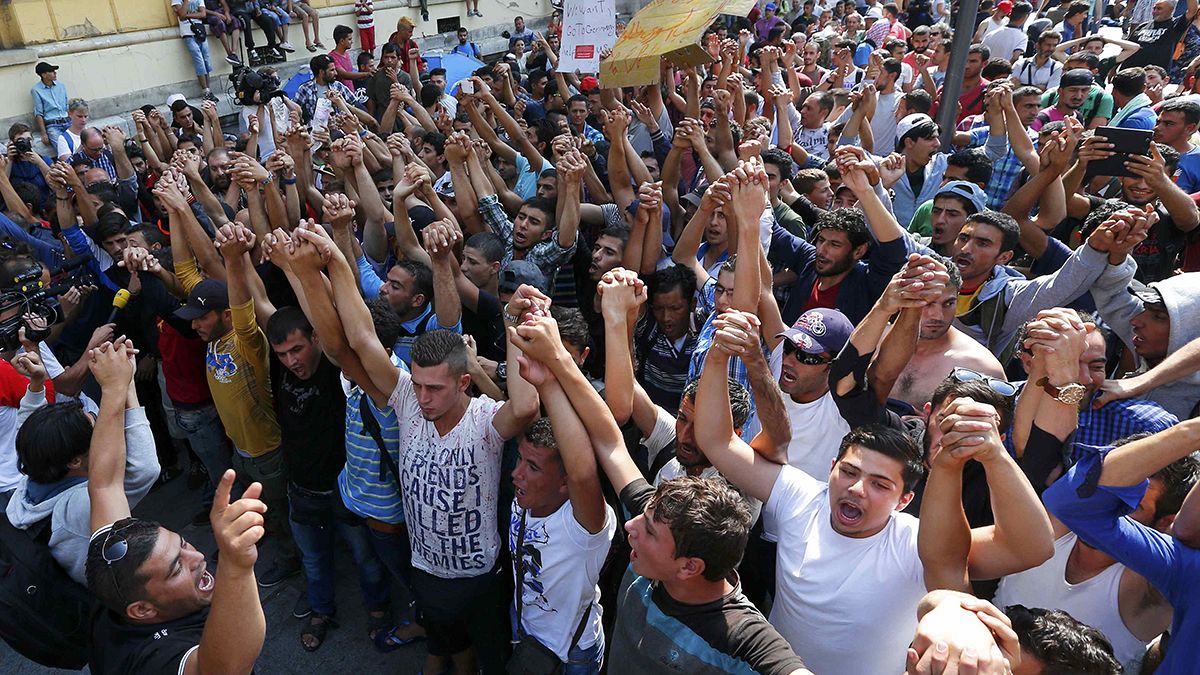Germany is offering asylum to Syrians, Hungary is not letting them pass through. What is really happening in Budapest, what is behind the tumultuous scenes?
What are the migrants doing at the Eastern (Keleti) Railway Station in Budapest?
They want to take a train to Western Europe, Wien (Austria) and Munich (Germany). Also the Hungarian government created transition zones for the migrants in two railway stations, the Eastern (Keleti) and the Western (Nyugati). Trains arriving from the Serbian border arrive to the latter, but it is less crowded. There is talk about moving the transition zones away from the railway stations.
Why are Hungarian authorities not allowing migrants to take a train to Germany?
They cannot, according to the 3rd. Dublin Agreement. Asylum seekers have to stay where they asked for asylum, and if they leave that state during the process, they can be sent back to that country.
But they did let migrants go on Monday, what has changed?
Germany’s stance has seemingly changed. Angela Merkel said on Monday that Germany would not send back Syrian asylum seekers. Hungarian authorities in response let several thousand migrants to get on trains bound for Austria. Merkel later pointed out that the 3rd Dublin Agreement is still valid, so while they won’t send back Syrians who make it to Germany, they still expect the other states that signed the Agreement to stop them from going there.
So who is the bad guy, Hungary or Germany?
Neither and both. Hungary’s best interest would be to let the migrants through the country ASAP, but also wants to stay on the good side of its most important economic partner and closest power hub, Germany. The latter wants to create an EU-level asylum system, and until then keep the Dublin rules, which accumulate the migrants in the countries on the EU border. Central and Eastern-European member states are clearly opposed to quota-based German suggestions.
But Hungary is building a razor-wire fence?
The Hungarian governing party, FIDESZ first said the fence is needed to stop the migrants. When it became obvious that they were still arriving in their thousands, FIDESZ said the fence served to direct them to choke points that would make it easier to register them. The protection of the border is also an important subject in internal politics. FIDESZ turned the migrant crisis into a huge national issue. Its move forced the liberal and left opposition to take sides with the refugees, which is clearly an unpopular position, meanwhile stole one of the main potential themes from the far right Jobbik.
So how does Hungary treat the migrants?
Hungarian journalists disguised as migrants went through most of the process asylum seekers are subjected to after being detained by the police. They described the conditions as minimal, but bearable. Members of the authorities were described as jaded, grumpy but not hostile and in the end humane. On the other hand in the Budapest transit zones migrants only receive bread and water from the authorities, and they are not supposed to wash themselves at the taps. Services do not include medical assistance, which is only available from NGOs. Several civil groups are trying to help the migrants, particularly children.
